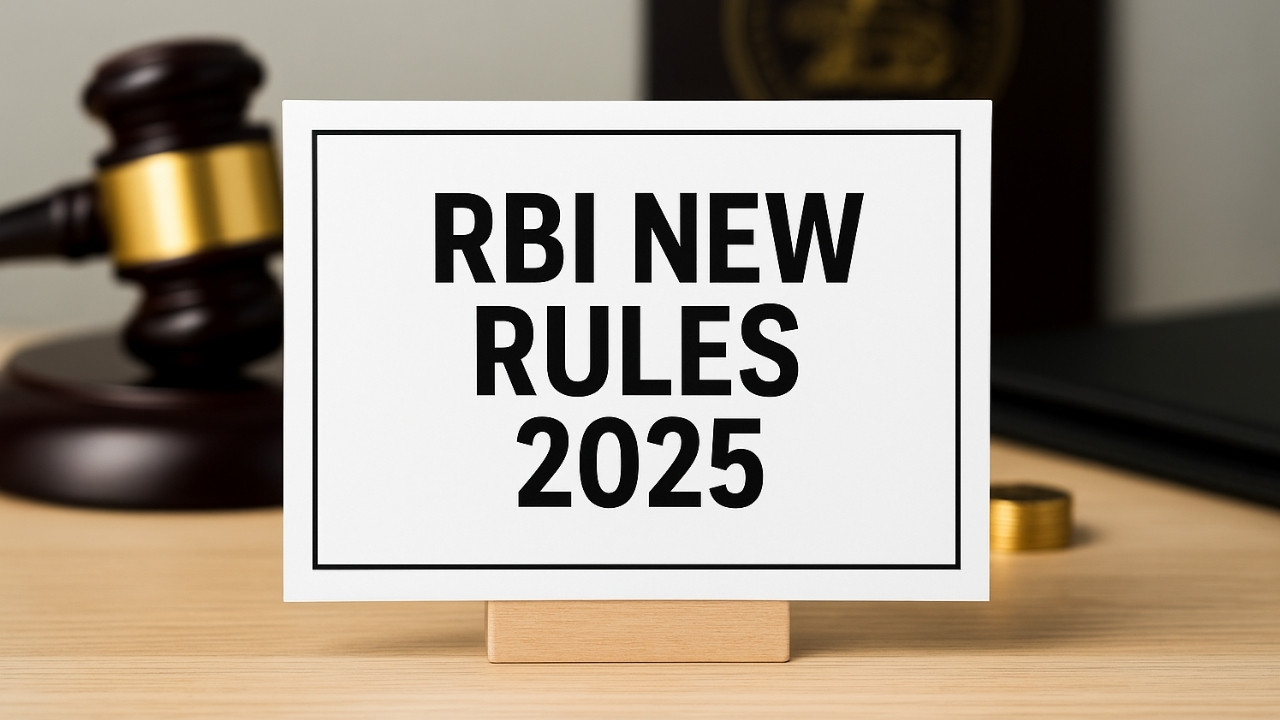The Reserve Bank of India (RBI) has unveiled a series of updated financial regulations in 2025 that directly impact the operations of banks, non-banking financial institutions, and individual account holders. These changes are designed to encourage digital adoption, improve financial security, and ensure better transparency in lending and account management.
Account holders will need to adapt quickly, as many of these rules have already taken effect or are scheduled for enforcement within the calendar year. Some changes concern how often credit scores are updated, while others affect ATM fees, loan interest rates, fixed deposit withdrawals, and the treatment of dormant bank accounts. Each rule carries implications for the average Indian consumer, especially those who rely heavily on traditional banking practices.
Whether you are managing personal finances, applying for a home loan, or saving through fixed deposits, the new rules require informed action. Below is a detailed breakdown of the most important RBI rules for 2025 that you must know.
Repo Rate Slashed to 6%: Limited Transmission, But Relief Expected

In an effort to provide liquidity and boost consumption, the RBI reduced the repo rate from 6.25% to 6.00% in April 2025. This marks the second consecutive quarter in which the central bank has lowered the benchmark rate by 25 basis points. As a result, loans are technically cheaper for consumers; however, the extent of benefit depends on how banks pass on this reduction to borrowers.
Despite the downward revision, the actual transmission has been partial across banks. Many financial institutions have been reluctant to revise lending rates aggressively due to high credit risk and rising Non-Performing Assets (NPAs). For floating-rate loans, especially those linked to the external benchmark, the changes are more immediate. For fixed-rate loans, the impact is negligible unless refinanced.
Borrowers are advised to compare offerings from different banks before locking in any long-term financial commitments. Even a slight difference in interest rates can result in substantial savings over the loan tenure.
ATM Fee Revisions: Higher Costs for Frequent Withdrawals
Effective from May 1, 2025, ATM charges have been revised in line with the National Payments Corporation of India (NPCI) recommendations, which were approved by the RBI. Customers exceeding the number of free transactions allowed by their bank will now pay a higher fee per transaction.
These changes are intended to discourage frequent cash withdrawals and to encourage digital payments, which are more efficient and secure. As India moves toward a digital-first banking model, the cost structure for physical transactions has been revised accordingly.
| Transaction Type | Old Charges (₹) | New Charges (₹) |
|---|---|---|
| Exceeding Free Limit | ₹21 | ₹23 |
| Non-home Bank ATM Transaction | ₹20 | ₹22 |
Customers, particularly those in rural or semi-urban areas who depend on cash withdrawals, may feel the pinch of this change. Planning ATM usage carefully and shifting to mobile-based platforms like UPI and net banking can help minimize these charges.
New Withdrawal Guidelines for Fixed Deposits with NBFCs and HFCs
From January 1, 2025, the Reserve Bank has updated rules concerning fixed deposits maintained with Non-Banking Financial Companies (NBFCs) and Housing Finance Companies (HFCs). The revised framework offers more flexibility to depositors, especially those holding small deposits.
Deposits of ₹10,000 or less can now be withdrawn within the first three months of deposit without interest. This is a major deviation from earlier policies that imposed penalties or did not allow early withdrawal at all. Furthermore, customers facing serious medical emergencies can withdraw their fixed deposits fully without earning any interest but also without facing financial penalties.
This provides greater financial flexibility during emergencies while ensuring that such withdrawals are not exploited for short-term gain.
| Withdrawal Condition | Interest Payable | Penalty Applicable |
|---|---|---|
| ≤ ₹10,000 withdrawn within 3 months | 0% | No |
| Withdrawal due to medical emergency | 0% | No |
While these rules benefit low-income depositors, investors must be cautious. Choosing short-term deposits and withdrawing prematurely could lead to zero interest earnings, affecting long-term financial goals.
Digital Lending Under Scrutiny: New Oversight Norms Introduced
To address growing concerns about fraudulent lending apps and data misuse, the RBI has strengthened compliance standards for digital lenders starting May 8, 2025. Financial institutions and fintech companies offering digital credit must now disclose their Loan Service Providers (LSPs) transparently. These details are to be published on the lender’s website and updated regularly.
Additionally, the central bank has introduced a central digital lending portal to verify whether a platform is authorized. This initiative is targeted at reducing fraud, improving consumer protection, and bringing accountability to the fast-growing digital lending sector.
Borrowers will also receive instant notifications via SMS or email when their credit score is accessed by any lending institution. Such transparency helps prevent unauthorized inquiries and data leaks.
Credit Score Updates Made More Frequent to Ensure Financial Visibility
In a move toward better credit monitoring, the RBI has mandated that credit bureaus update customer credit scores every 15 days, starting January 2025. This is a shift from the earlier monthly update cycle.
With more frequent updates, borrowers can:
- Monitor their financial behavior in near real-time.
- Spot fraudulent activities quickly.
- Take corrective action before applying for new credit.
Borrowers will also be entitled to receive one free credit report every year, enhancing financial awareness and enabling smarter financial decisions.
Dormant Accounts With Zero Balance to Be Closed Automatically
To reduce banking system vulnerabilities, the RBI has directed banks to automatically close accounts that show no activity for 24 consecutive months and have a zero balance. This rule came into effect on January 1, 2025.
Such accounts are often targets for fraudulent transactions or identity theft. Closure of these accounts helps minimize operational risks and improves account data hygiene across the banking network.
Customers are advised to keep their bank accounts active by conducting at least one transaction per year. This includes deposits, withdrawals, or even automatic payments like standing instructions.
Actions You Should Take as an Account Holder
To remain compliant and protect your financial standing under the new RBI guidelines, consider the following actions:
- Switch to digital platforms like UPI, NEFT, and mobile wallets for routine payments.
- Compare interest rates before applying for new loans to take advantage of repo rate benefits.
- Review and update your credit report every 15 days to catch anomalies early.
- Avoid premature FD withdrawals unless necessary, especially for low-value deposits.
- Use your bank account at least once annually to avoid closure.
Mistakes to Avoid in 2025 Under New RBI Rules
- Do not ignore SMS/email alerts regarding credit score inquiries—these could indicate fraud.
- Avoid exceeding free ATM withdrawals frequently, as this will incur higher charges.
- Don’t treat digital loan apps casually—verify their registration before using.
- Refrain from opening multiple unused accounts that may become dormant and attract risk.
- Do not rely solely on fixed deposits with NBFCs without understanding the interest payout conditions.
Why These Changes Matter to You
The RBI’s 2025 regulatory changes reflect a broader shift toward a digitally responsible, financially aware, and secure banking ecosystem in India. While some of the new rules require customers to modify long-standing habits, they ultimately enhance consumer protection, transparency, and access to financial services.
Staying informed about these changes, acting proactively, and adopting modern banking practices can go a long way in safeguarding your money and ensuring smooth financial operations throughout the year.
Would you like me to generate a realistic featured image (1280×720 px) for this article?

Aarav Sharma is a dedicated content specialist with a strong focus on Indian government schemes, recruitment updates, and social welfare policies. With a background in public administration, he simplifies complex regulations for everyday readers. Aarav’s articles are known for their clarity, accuracy, and data-driven insights.